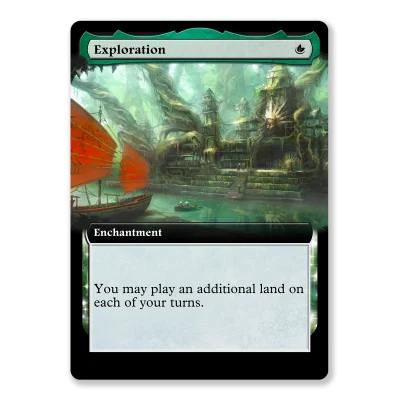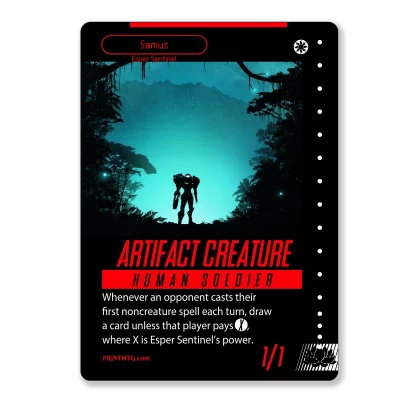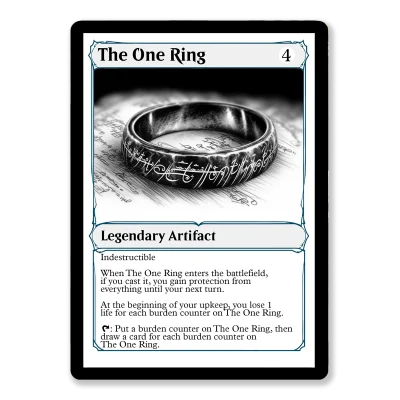Are you trying to distinguish your Gruul from your Grixis? Let us assist with this guide to the names of MTG’s color combinations.
Magic: The Gathering
- Players: 2-8
- Rules complexity: Medium
- Strategic depth: Medium
- Publisher: Wizards of the Coast
- Designer: Richard Garfield
The five mana colors of Magic
The Gathering can be combined into various MTG color combinations. There are dozens of possible MTG color combos, each with unique playstyle and lore within the card game world.
While knowing the names of each color combination and its background lore is optional for building a good MTG deck, it can be helpful when conversing with other players who might use nicknames instead of color names. Many long-term fans use these color combination names or abbreviations for convenience. Plus, it can add extra flavor to your next deck.
MTG Color Combinations
What do allied and enemy colors mean in MTG?
Two-color combinations
Three-color combinations
Four-color combinations
Five-colored combination
You can include any number of the five MTG mana colors – Blue, Black, Green, Red, and White – in your deck. A deck with a single color is referred to as a mono-color deck, while combinations of two, three, four, or even all five colors have specific names based on the included colors. MTG has 25 possible color combinations: 10 color pairs, ten three-color combinations, and five four-color combinations.
When referring to the colors in each combination, each color is sometimes abbreviated to the first letter of its name – G for Green, R for Red, and so on – with ‘U’ used for Blue to avoid confusion with Black, represented by B. (Both colors also have L as a second letter.)
Below, we’ve listed every MTG color combination with its name and an explanation of the lore behind the nicknames. While listing the individual colors in your deck perfectly fine, knowing the MTG color combination names is a fun way to immerse yourself even deeper in the trading card game’s universe.
What do allied and enemy colors mean in MTG?
Magic: The Gathering’s five colors represent a particular playstyle in the TCG, reflected in the kinds of cards assigned to the mana color. Some colors make for harmonious pairs, while others are naturally opposed in their focus. These are referred to as “allied” and “enemy” colors.
Allied colors in MTG mean that the colors typically overlap regarding their playstyle and in-game mechanics. For example, White and Blue offer many control options, helping you manipulate your opponents’ cards and shut down attacks with counterspells while protecting your creatures.
In contrast, enemy colors in MTG are at odds with each other regarding a deck’s gameplay strategy. A good example is White and Black. White tends to be a color of life and healing, helping the player gain life points using its cards, while Black is focused on death and life loss, reviving cards from your graveyard and draining your opponents’ life points.
Both allied and enemy colors can create strong decks. Allied colors naturally result in more tightly focused decks but often share similar gameplay weaknesses. Enemy colors allow for a more diverse deck but may need a more focused strength of colors that align in mechanics.
If you’re wondering which colors are allied and enemy in MTG, there’s an easy way to tell. Look at the back of any Magic: The Gathering card. You’ll see five circles representing the five mana colors arranged in a pentagon. Colors adjacent to each other, such as Black with Red or Blue or Green with White or Red, are allied colors. Opposite colors, such as Red with White or Blue, are enemy colors.
Two-color combination names in MTG
Two-color combinations, or pairs, in Magic: The Gathering make up many of the game’s most popular decks. The names of two-color pairs in MTG are based on one of the TCG’s most iconic planes: Ravnica. Each two-color combination is named after one of the titular city’s guilds, as the original Ravnica block based the guilds’ nature on the playstyle of the ten possible two-color pairs.
MTG’s two-color combinations are:
- Azorius: Blue/White
- Boros: Red/White
- Dimir: Black/Blue
- Golgari: Black/Green
- Gruul: Green/Red
- Izzet: Blue/Red
- Orzhov: Black/White
- Rakdos: Black/Red
- Selesnya: Green/White
- Simic: Blue/Green
Three-color combination names in MTG
Three-color combinations in Magic: The Gathering are divided into two types: allied and enemy colors. Five “Shards” are made up of three allied colors – a color and the two colors that sit on either side of it on MTG’s color wheel, sometimes called “arcs” – while five “Wedges” comprise cards from three enemy colors opposite each other on the color wheel.
Like the lore behind MTG’s color pairs, three-color combinations also have nicknames inspired by the card game’s planes. The three-color Shards are named after the shards of the fragmented world Alara, introduced in the 2008 block, while the Wedges are named for the five opposed clans of Tarkir, first seen in 2014’s Khans of Tarkir block.
The five three-color combinations known as Shards, composed of allied colors, are:
- Bant: Blue/Green/White
- Esper: White/Blue
- Grixis: Black/Blue/Red
- Jund: Black/Green/Red
- Naya: Green/Red/White
The five three-color combinations, known as Wedges made up of enemy colors, are:
- Abzan: Black/Green/White
- Jeskai: Blue/Red/White
- Mardu: Black/Red/White
- Sultai: Black/Blue/Green
- Temur: Blue/Green/Red
Four-color combination names in MTG
There are five ways to combine four colors in MTG. While these, too, have nicknames based on Magic: The Gathering lore, their background isn’t as deep as the names for two-color pairs or three-color combinations. These names are also less widely used but are still worth knowing.
The four-color combination names are taken from a set of creatures called the Nephilim introduced in the 2006 set Guildpact, part of the Ravnica block. Each four-color combination is named for the creature card that shared its unique combination of mana colors, which were the only such four-color creatures for a decade until the release of new four-color creatures in a 2016 Commander set. Those creatures were Dune-Brood Nephilim, Glint-Eye Nephilim, Ink-Treader Nephilim, Witch-Maw Nephilim, and Yore-Tiller Nephilim, which are shortened when referring to the color combinations.
The four-color combinations in MTG are:
- Dune: WBRG (No Blue)
- Glint: UBRG (No White)
- Ink: WURG (No Black)
- Witch: WUBG (No Red)
- Yore: WUBR (No Green)
Five-color combination name in MTG
If you’re including all five colors in your Magic: The Gathering deck, there’s only one possible combination! Unlike the other MTG color combinations, the five-color combination doesn’t have a fun nickname related to MTG lore.
Instead, a five-color combination in MTG is called “five-colored” or “WUBRG” – pronounced “woo-berg.” The same term refers to any cards that cost one of every type of mana.
Wrapping Up
From mono-color decks to the diverse landscapes of two, three, four, and even five-color combinations, each choice brings its unique flavor to the battlefield.
Whether you’re a seasoned planeswalker or just starting your magical journey, knowing the names and nuances of these color combinations adds an extra layer of immersion to your experience. It’s not just about playing the game; it’s about becoming part of the intricate tapestry of the Magic multiverse.
So, the next time you find yourself dueling with fellow mages, remember the significance of Azorius, the intrigue of Grixis, the power of Abzan, and the boundless possibilities of five-colored decks. Embrace the magic of MTG’s color combinations, and may your decks always be stacked in your favor as you explore the infinite worlds of Magic: The Gathering.





